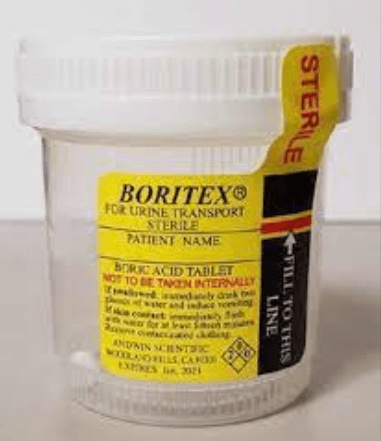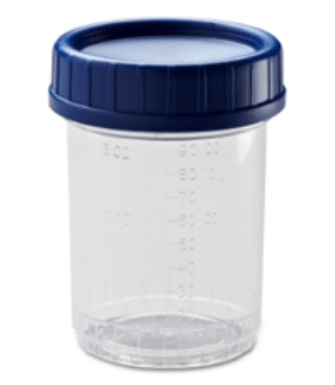Microbiology


Microbiology Testing Services and Complex or Unknown Infections
Routine Urine Culture and Antibiotic Sensitivity Testing
Microbiology laboratories use both traditional and advanced diagnostic techniques to identify uncommon pathogens. Emerging pathogens and antibiotic-resistant bacteria require the use of microbial testing so that healthcare teams can develop treatment plans.
A microbial study can identify bacteria, fungi, or protozoans in a specimen collected from a patient. Microbiology testing may also be used when doctors suspect multiple infectious agents in a patient’s illness.
Madison Core Laboratories provide accurate and efficient microbiology testing services for complex infections and for infections where routine diagnostic testing is insufficient for a proper diagnosis.
Contact Us
Clinical Significance
Contact Us
Appropriate Uses of Urine Cultures
Presence of symptoms suggestive of a urinary tract infection (UTI). For example,
- Flank pain or costovertebral angle tenderness,
- acute hematuria,
- new pelvic discomfort
- New onset or worsening sepsis without evidence of another source on history, physical examination, or laboratory testing
- Fever or altered mental status without evidence of another source on history, physical examination, or laboratory testing
- In spinal cord injury patients: increased spasticity, autonomic dysreflexia, sense of unease
Inappropriate Uses of Urine Cultures
- Odorous, cloudy, or discolored urine in the absence of other localizing signs/symptoms
- Reflex urine cultures based on urinalysis results, such as pyuria, in the absence of other indications (Absence of pyuria suggests a diagnosis other than CAUTI)
- Urine culture to document response to therapy unless symptoms are failed to resolve
Reporting
Contact Us
Specimen Collection

SPECIMEN STORAGE & TRANSPORT
Temperature: room temperature (15 °C – 25 °C / 59 °F – 77 °F) Maximum Holding Time: 72 hours
ACCEPTABLE SPECIMEN TYPES
Urine: ≈ 70 mL in Boritex Urine Culture Cup (enough to reach red fill line)
REJECTION CRITERIA
- Transport time greater than 72 hours
- Specimen container not labeled
- Specimen container not sealed properly
SPECIMEN COLLECTION
Provider Instructions
- Label the Boritex Cup with the patient’s information (Name and DOB).
- Leave the white tablet in the cup. DO NOT INGEST. DO NOT TOUCH.
- Have the patient submit a clean-catch midstream urine sample in the Boritex Urine Cup.
- Place the Boritex Urine Culture Cup inside the biohazard specimen bag and seal tightly.
- Fill out the requisition form completely
- Transport to the laboratory within 72 hours of collection.

ACCEPTABLE SPECIMEN TYPES
- Clean catch midstream urine specimen collected into a sterile container
- Proper collection from an in-dwelling catheter.
REJECTION CRITERIA
- Transport time greater than 72 hours
- Specimen container not labeled
- Specimen container not sealed properly
SPECIMEN COLLECTION
- Use only for the transport of urine specimens for culture and sensitivity (C&S)
- A minimum volume of 5 ml of urine is required to ensure adequate fill to the 4 mL line on tube
- Transfer the urine from the collection container into the vacutainer tube immediately after collection. Do not fill tubes by pouring urine or injecting urine into the tube.
- Aliquot the mid-stream urine specimen or catheter specimen into a grey topped urine C&S vacutainer tube using the provided transfer straw.
- Label the vacutainer urine tube with the patient’s information (Name and DOB).
- Place the vacutainer urine tube inside a biohazard specimen bag and seal tightly.
- Fill out the requisition form completely. Transport to the laboratory within 72 hours of collection.

ACCEPTABLE SPECIMEN TYPES
- Clean catch midstream urine specimen collected into a sterile container
- Proper collection from an in-dwelling catheter.
REJECTION CRITERIA
- Transport time greater than 24 hours
- Specimen container not labeled
- Specimen container not sealed properly
SPECIMEN COLLECTION
Provider Instructions
- Label the sterile specimen cup with the patient’s information (Name and DOB).
- Have the patient submit a clean-catch midstream urine sample in a sterile specimen cup. If collecting an in-dwelling catheter specimen, make sure the proper procedure is followed and placed in a sterile urine cup.
- Place the sterile Cup inside the biohazard specimen bag and seal tightly.
- Fill out the requisition form completely
- Transport to the laboratory within 24 hours of collection.
Urinalysis criteria for cultureand sensitivity workup
If a urinalysis with culture and sensitivity (if indicated) flags any of the following, it will reflex for a urine culture.
- Positive for Blood, Nitrites, or Leukocytes
- Protein= Small, Moderate, Large
- WBC >10, RBC >10, or WBC clumps present
- Bacteria > Moderate
- Yeast present
Antibiotics Reported for Gram Negative Bacteria:
Gram Negative Antibiotics | Gram Negative Antibiotics |
Amoxicillin/Clavulanic Acid | Extended Spectrum Beta Lactamase (ESBL) |
Ampicillin | Gentamicin |
Ampicillin/Sulbactam | Imipenem |
Cefazolin | Levofloxacin |
Cefepime | Nitrofurantoin |
Ceftazidime | Piperacillin/Tazobactam |
Ceftriaxone | Tobramycin |
Ciprofloxacin | Trimethoprim/Sulfamethoxazole |
Ertapenem |
Antibiotics Reported for Gram Positive Bacteria:
Gram Positive Antibiotics | Gram Positive Antibiotics |
Ampicillin (Enterococcus species, Streptococcus agalactiae) | Moxifloxacin |
Benzylpenicillin (Enterococcus species, Staphylococcus species, Streptococcus agalactiae) | Nitrofurantoin |
Cefoxitin Screen | Oxacillin |
Ciprofloxacin | Quinupristin/Dalfopristin (Synercid) |
Clindamycin | Rifampin |
Erythromycin | Streptomycin High Level (Synergy) |
Gentamicin | Tetracycline |
Gentamicin High Level (Synergy) | Tigecycline |
Inducible Clindamycin Resistance | Trimethoprim/Sulfamethoxazole |
Levofloxacin | Vancomycin |
Linezolid |
Contact Us
